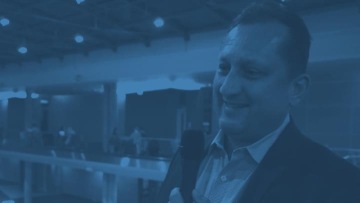2021: Don’t wing it

“…[I]n turbulent times, the first task of management is to make sure of the institution’s capacity for survival, to make sure of its structural strength and soundness, of its capacity to survive a blow, to adapt to sudden change, and to avail itself of new opportunities.”
From Peter F. Drucker, Managing in Turbulent Times.
Taking Stock
When management guru Peter Drucker wrote Managing in Turbulent Times in 1980, business was facing a set of different challenges. But, his call to action still resonates in 2021. We are again in a time where leadership counts, and when strategies and actions that anticipate change are required.
Last summer, many commentators spoke optimistically about how the corner on Covid-19 was turning. Then, Fall came and they weren’t. Now, with vaccines rolling out talk is again hopeful. But, what about those virus mutations? Nobody knows what lurks.
Throughout 2020, I wrote about what Comp&Ben leaders should do to manage through the turbulence. The start of the New Year is a good moment to take stock. Consider whether your firm is built to last.
Foundations
People are the only true resource. As I wrote in June, they are the guarantors of business continuity. Neither the product nor the service makes or sells itself.
Innovation does not materialize out of thin air.
Businesses need people. They are the foundation. The foundation requires care. Management needs to foster an environment where people can be productive and achieve. People need to work in an environment where they do not fear the indiscriminate swing of the meat ax. This is not all, however.
In April, I wrote about the importance of keeping employees financially and emotionally ‘in the game’. They need to feel and be engaged. If they are not, there will be cracks in the foundation. You do not want them to stop identifying with their employer, with the resulting risks that poses.
Resilience
As you might imagine, a lot was written about resilience in 2020. In fact, more than one professional association and consultancy have dedicated conferences to this.
When I consider organizational resilience, I also think about people. However, my focus is more on what organizations do to invest in the right people to deliver the business agenda. In August, I argued against the practice of spreading pay around like peanut butter. This is especially true in turbulent times where funds are short.
I wrote that if you are indiscriminate with base pay increases, the economic impact to the firm does not stop there. Other expense items with a bearing on the company’s financial resilience will also swell. Beware of the multiplier effect: any increase in an employee’s base pay may also trigger increases in inventive or stock award opportunity, overtime pay, pension contributions, employment taxes, etc.
However, monies, when invested in the right places, can facilitate organizational resilience. My August article also considered how a company’s theory of its business tells you its direction, why it is taking a certain path, and how activities are to be aligned internally. When this is translated into strategic workforce planning, it tells you which parts of the organization will play the most critical roles in the longer term. The business strategy then adds detail, telling you what areas of the organization are critical in the lead up to the long-term.
Keeping an eye to the end-game is key.
You do not want to let turbulence knock you off track, though you will certainly need to recalibrate along the way.
Adaptability
From a salary budget standpoint, part of adapting to sudden change is knowing where to look for funding for needed initiatives. In September, the second part of my ‘Peanut Butter’ article offered an approach to finding hidden monies. I also suggested that harvesting those monies would require cracking some tough nuts. In turbulent times, you do not have the luxury to pay above market for one profession or department when another that is business critical is lagging.
Being adaptable also requires an understanding of what pay mix and for whom delivers the most robust ROI. Ultimately, the right levers – including actions that keep engagement - need to be pulled. One of the ends must be to foster organizational and workforce flexibility.
Opportunities
Businesses need people.
At the start of this article, I wrote that businesses need people. Innovation does not materialize out of thin air. To that, I would add that your people are the source of new business. They best understand your customers’ needs. They dream up new product and develop new formulations.
In November 2020, I put forth that your rank-and-file employees were the real rock stars of the year. I would argue that these same rock stars, the ones who kept your business going during these turbulent times, know where opportunities lie. They are a fountain of market intelligence.

Michal Freire
Michael Freire je zkušeným Comp&Ben profesionálem s více než třicetiletou zkušeností v oblasti lidských zdrojů, včetně působení jako HR Business Partner ve výrobní oblasti. Pracoval v EMEA a americkém regionu v rámci obou trhů (Emerging & Developed Markets), a po dobu dvaceti let byl zodpovědný za poskytování comp&ben řešení na úrovni podniků, regionů a zemí ve velkých nadnárodních společnostech.
Autor článku



